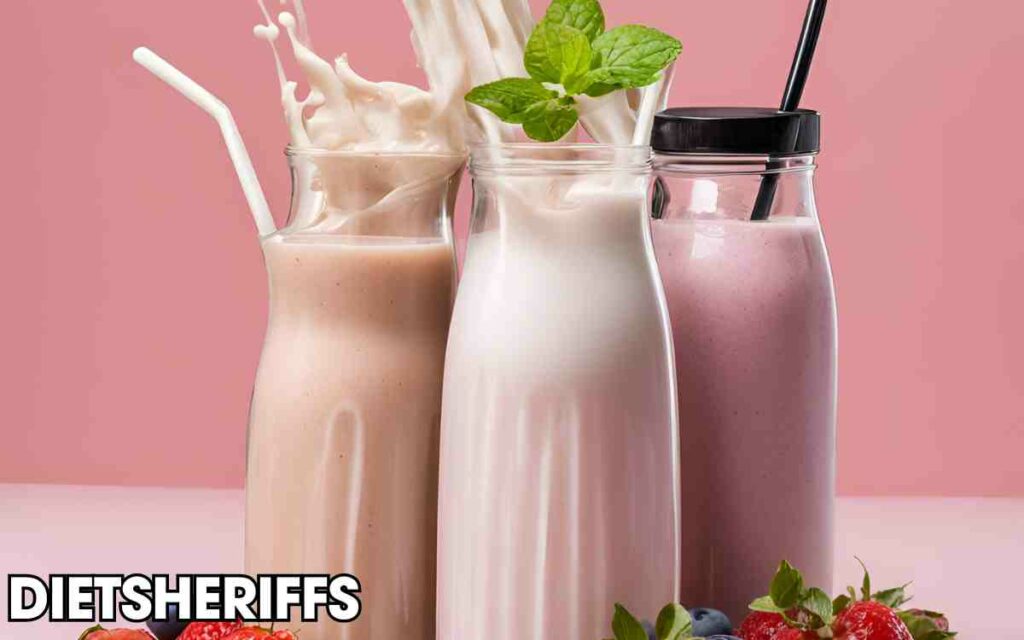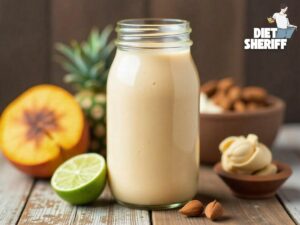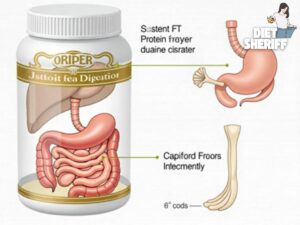Protein shakes have become a staple for fitness enthusiasts and busy individuals alike. They offer a convenient and delicious way to boost your protein intake, which is crucial for muscle building.
But can you make protein shakes with milk? The answer is a resounding yes! In fact, milk can be a fantastic base for your protein shakes, offering a creamy texture and additional nutrients.
However, there’s more to the story than just a simple yes or no. This guide will delve deep into the world of milk-based protein shakes, exploring their benefits. Without further ado, let’s get started!

How Does Using Milk Impact the Nutritional Profile of Protein Shakes?
Using milk in protein shakes significantly enhances their nutritional profile. It naturally provides a substantial amount of protein, ranging from 8 grams per cup for whole milk to around 6 grams for skim milk.
When combined with protein powder, milk increases the overall protein content, aiding muscle building and recovery. Additionally, milk is an excellent source of calcium, providing approximately 300 milligrams per cup, essential for strong bones and teeth.
Milk also contains vitamins A, D, B12, and riboflavin, contributing to overall health and supporting various bodily functions. Furthermore, milk’s fluid content can aid in hydration, crucial for optimal bodily functions and muscle recovery.
Related Articles: What Happens if You Drink Protein Shakes Without Working Out
Should You Have a Protein Shake with Milk or Water?
While milk offers undeniable benefits, water remains a popular choice for protein shakes. Here’s a breakdown of the pros and cons of each to help you decide which one aligns best with your goals:
Milk: Building Mass and Muscle
If your goal is to pack on muscle and increase mass, mixing your protein powder with milk is the way to go.
Pros: Creamy texture, additional protein and carbohydrates, natural sweetness.
Cons: Higher in calories and fat (especially whole milk), may not be suitable for lactose intolerant individuals.
Water: Trimming and Toning
For those aiming to stay lean and toned, water is your best friend.
Pros: Lower in calories and fat, perfect for those on a calorie-restricted diet.
Cons: Thinner consistency, less flavor, may not be as filling.
Related Articles: Does Protein Shake Make You Lose Weight?
Can You Make Protein Shakes with Milk? Choosing the Right Milk for Your Protein Shake
The world of milk extends far beyond the classic carton of whole milk in your fridge. Here’s a breakdown of different milk options and how they can impact your protein shake:
1. Whole Milk: This OG milk option boasts the highest protein and calorie content (around 8 grams of protein and 146 calories per cup). It’s perfect for those looking to build muscle mass and increase their calorie intake.
2. Reduced-Fat Milk: A good middle ground, reduced-fat milk offers a lower calorie count (around 120 calories per cup) with a decent amount of protein (around 8 grams per cup). It’s ideal for those watching their calorie intake but still want the creamy texture and protein boost.
3. Skim Milk: This low-fat option contains the least amount of calories (around 80 calories per cup) and still provides a respectable amount of protein (around 8 grams per cup). It’s suitable for those on a strict calorie-restricted diet.
4. Plant-Based Milk Options: For those with lactose intolerance, vegan diets, or who simply prefer plant-based alternatives, there are numerous milk options available. Popular choices include almond milk, soy milk, and oat milk.
- Almond Milk: Generally lower in calories and fat than cow’s milk, almond milk is a popular choice for those watching their calorie intake. However, it’s naturally low in protein (around 1 gram per cup), so factor that in when choosing your protein powder.
- Soy Milk: One of the few plant-based milks that rivals cow’s milk in protein content (around 7 grams per cup), soy milk is a good option for vegans looking for a protein boost. Just be mindful of any potential soy allergies.
- Oat Milk: This creamy plant-based milk offers a slightly higher calorie count than some alternatives (around 120 calories per cup) but with the added benefit of some fiber. It’s a good choice for those seeking a more filling shake.
Related Articles: Can You Put Protein Powder in Tea?
Creating Delicious Milk-Based Protein Shakes
Now that you know the benefits and have addressed any concerns, it’s time to get creative in the kitchen! Here are a few tips for delicious milk-based protein shake recipe:
- Choose Your Milk: Opt for whole, low-fat, or skim milk based on your preferences and dietary needs.
- Add Protein Powder: Whey, casein, or plant-based protein powders can be blended with milk for an extra protein boost.
- Incorporate Fruits and Vegetables: Fresh or frozen fruits and vegetables can add flavor, fiber, and essential vitamins and minerals to your shake.
- Experiment with Flavors: Spices, extracts, nut butters, and cocoa powder can transform a simple protein shake into a decadent treat.
- Customize for Your Goals: Adjust the ingredients and make protein shake to lose weight or build muscles.
Related Articles: What to Mix with Protein Powder to Make It Taste Good: 8 Effective Ways
What Are the Advantages and Disadvantages of Making Protein Shakes with Milk?
Like any ingredient, using milk in protein shakes has its own set of advantages and disadvantages. Let’s explore them:
Here are the advantages of making protein shakes with milk:
- Milk’s natural creaminess and flavor can enhance the taste and texture of protein shakes.
- Milk provides an easy way to incorporate high-quality protein, calcium, and other nutrients.
- Milk can be used with various protein powder flavors and ingredients for endless flavor combinations diet sheriff.
- Cow’s milk is generally more affordable and widely available compared to some plant-based alternatives.
Here are the advantages of making protein shakes with milk:
- Individuals with lactose intolerance may experience digestive discomfort or symptoms.
- Those with dairy allergies or sensitivities should avoid milk-based protein shakes.
- Whole milk contains a higher amount of saturated fat than low-fat or skim milk varieties.
- Some individuals may have environmental concerns about the dairy industry’s impact.
Whether you’re a seasoned fitness enthusiast or just starting your journey, embracing milk-based protein shakes can be a game-changer for your diet and workout routine.
So, can you make protein shakes with Milk? Absolutely yes! By incorpnborating milk into your protein shakes, you can create delicious, nutritious concoctions that support your fitness goals and overall health. So, grab a blender, some milk, and your favorite ingredients, and start shaking things up!
Explore Also:
Creativehouseblog
Gigasecurehome
Mycleanseplan
Can You Make Protein Shakes with Milk – FAQs
Is it better to use whole milk or low-fat milk for protein shakes?
The choice depends on your personal preferences and dietary goals. Whole milk provides a richer, creamier texture and contains more calories and fat. Low-fat or skim milk, on the other hand, is lower in calories and fat but still provides a good amount of protein and calcium.
I’m lactose intolerant. Can I still enjoy protein shakes?
Absolutely! There are various lactose-free milk options available, such as lactose-free cow’s milk or plant-based alternatives like almond milk or coconut milk.
Which type of milk is the best option for protein shake?
While cow’s milk is the most common choice, you can also use other types of milk in your protein shakes, such as goat’s milk or sheep’s milk.
How much milk should I use in a protein shake?
The amount of milk depends on your desired consistency and calorie intake. A good starting point is 1 cup (240ml) of milk. You can adjust this based on your preferences. If you want a thicker shake, use less milk. Conversely, for a thinner consistency, add more milk.
What’s the best time to drink a protein shake with milk?
There isn’t a single “best” time. Post-workout is a popular choice because the protein helps with muscle recovery. You can also have it for breakfast for a protein-packed start to your day, or as a healthy snack between meals.






